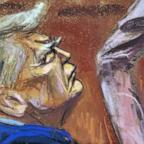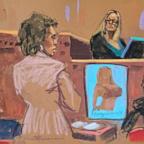Health Highlights: April 28, 2009
April 29 -- Here are some of the latest health and medical news developments, compiled by editors of HealthDay:
Scientists Create Glowing Dogs for Research
Four dogs that glow red were created using cloning techniques that could be used to treat human diseases, say South Korean scientists.
The fluorescent genes in the beagles cause them to glow red under ultraviolet light. Other scientists have cloned fluorescent mice and pigs, but this is the first time researchers have successfully cloned dogs with modified genes, the Associated Press reported.
The achievement is described in a paper on the Web site of the journal Genesis.
"What's significant in this work is not the dogs expressing red colors but that we planted genes into them," research team leader Lee Byeong-chun, a Seoul National University professor, told the AP.
This experiment shows it's possible to successfully insert genes with a specific trait, he explained. That could eventually lead to implanting genes in order to treat specific diseases.
-----
Sleep Affects Children's Behavior: Study
Getting enough sleep may help reduce hyperactivity and bad behavior among children, suggests a new study.
Finnish researchers studied 280 healthy children, ages 7 and 8, and found that those who got an average of less than 7.7 hours of sleep per night had higher scores on tests of hyperactivity and impulsive behavior. They also had more symptoms of attention-deficit hyperactivity disorder (ADHD), BBC News reported.
"We were able to show that short sleep duration and sleeping difficulties are related to behavioral symptoms of ADHD," said study leader Dr. Juulia Paavonen. "The findings suggest that maintaining adequate sleep schedules among children is likely to be important in preventing behavioral symptoms."
Paavonen also said inadequate sleep may increase "some of the behavioral problems that have been seen in children with attention deficit disorders," BBC News reported.
The study appears in the journal Pediatrics.




